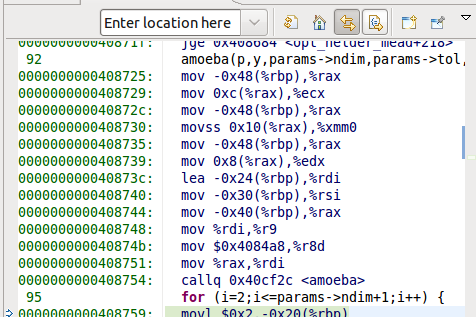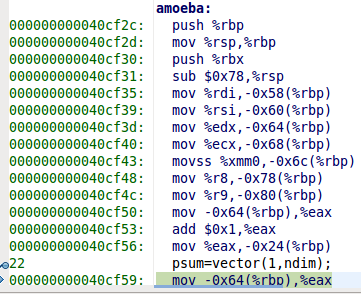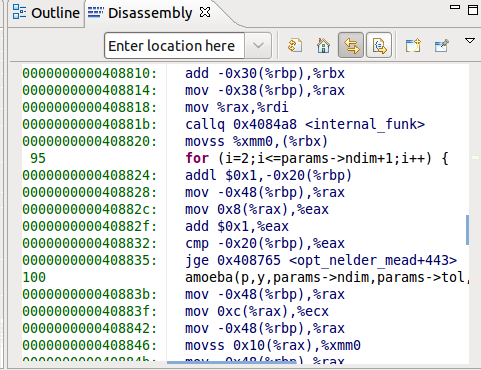Why does this function call work even though I inverted two parameters?
I'm working on a variation of the Nelder-Mead algorithm from Numerical Recipes, that would allow the user to specify a maximum number of target function calls to be made.
From my main routine, here is how I call the amoeba() function that implements the Nelder-Mead algorithm:
amoeba(p,y,params->ndim,params->tol,params->nmax,internal_funk,&nfunc);
But here is how it got implemented:
void amoeba(float **p, float y[], int ndim, unsigned nmax, float ftol, float (*funk)(float []), int *nfunk) {
....
}
Notice that I inverted the nmax and the ftol arguments in my function call.
Astonishingly, amoeba() still works. Stepping through it in a debugger confirms that the right values were assigned to nmax and ftol.
My main routine #included a header file that defines the signature of the amoeba() routine, and compiling the main routine yielded no errors. However, the amoeaba() source file did not include that header (a mistake of mine), and so the compiler did not generate any errors either.
So how come my linked program still functions as it should, even though the arguments are not given in the right order?
UPDATE
@Binyamin Sharet, I'm showing here the assembly right before the call to amoeba and in amoeba. Does it support your hypothesis?


UPDATE 2
@Binyamin Sharet sure, here it is:

The reason is probably, because the floating points parameters are not passed on the stack, but on the co-processor stack, so the order of those two didn't matter.
For example, the function expects this order of arguments:
| p | |
| y | |
| ndim | |
| nmax | |
| funk | |
| nfunk | ftol |
+------------------------+-----------------------------+
| stack | coprocessor stack |
It didn't matter if you switch nmax and ftol, because the order on the stacks would be the same, and when the amoeba tries to read them, it doesn't get confused for the same reason.
Edit
Reading the disassembly shows that I was off a bit, but that because of SSE, the instruction used for passing the float variable is movss, which you can see in both assemblt listing you added, one time to xmm0 register (in the caller), and one time from xmm0 (in the callee). so you can replace the words coprocessor-stack with xmm registers and that's your situation.
- Why would you use 'extern "C++"'?
- Strange Behavior Compiler Ignoring NULL Check Unless I Print Something in the if Statement
- Fast inverse square root using fixed point instead of floating point
- What is the const qualifier attached to in C: the memory area or the pointer?
- What is the scope of `fesetround()`?
- Is this declaration UB?
- GCC options for strictest C code?
- How to do an explicit fall-through in C
- How do compilers treat CONST qualifier when the pointer points to a memory location obtained with malloc()?
- C: cmocka headers - how to unittest?
- Why in C when I print a double with a one decimal it round it to the next number
- Android C to Java SWIG unable to compile: incompatible types: byte cannot be converted to SWIGTYPE_p_uint8_t
- GNU Make in Ubuntu giving fatal error: rpc/types.h: No such file or directory
- How can I exclude non-numeric keys? CS50 Caesar Pset2
- How change every struct in an array of pointers?
- Optimized 2x2 matrix multiplication: Slow assembly versus fast SIMD
- Simple frame by frame video decoder library
- GCC no longer implements <varargs.h>
- Contents of IO buffer unknown == unsafe?
- Avoiding strcpy overflow destination warning
- Sort program not working, not sure why
- Fast & accurate atan/arctan approximation algorithm
- What's the difference between strtok_r and strtok_s in C?
- How memory address for pointer to arrays is same as an element in 2D array?
- Which is the best way to suppress "unused variable" warning
- How to use ellipsis in c's case statement?
- Fast ceiling of an integer division in C / C++
- Is there an invalid pthread_t id?
- How to Implement Universal Setter/Getter Functions for Interrupt-Driven Variables in Embedded C?
- How does SIMD (avx) processing work? for example, if I want 10 32 bit floats how do i fit in a 256 bit avx vector?